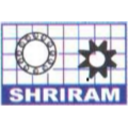
Understanding Seed Cleaners
Understanding Seed Cleaners
Seed cleaning technology has evolved considerably, offering a range of machines designed for different scales of operation, types of seeds, and cleaning requirements. From traditional fanning mills to advanced air screen cleaners, gravity separators, and color sorters, each type of seed cleaner offers unique features tailored to specific cleaning needs.
Assessing Your Needs
1. Scale of Operation: The size of your operation significantly influences the type of seed cleaner you should consider. Smaller farms might benefit from compact, versatile models, while large-scale agribusinesses may require more sophisticated, high-capacity machines.
2. Types of Seeds: Different crops require different cleaning mechanisms. For instance, delicate seeds like lettuce or flowers need gentler cleaning solutions than hardy grains such as wheat or corn.
3. Cleaning Requirements: Determine the level of cleanliness required for your seeds. While basic cleaning may suffice for some crops, others might need thorough cleaning to remove all impurities, affecting the choice of cleaner.
Key Features to Consider
1. Efficiency and Capacity: Evaluate the cleaner’s throughput in terms of bushels per hour to ensure it meets your operational demands. Higher efficiency machines save time and increase productivity.
2. Cleaning Mechanisms: Modern seed cleaners offer various cleaning mechanisms, including air separation, sieving, and gravity separation. Choose a machine that best suits the impurities typically found in your seeds.
3. Versatility: A machine capable of handling multiple types of seeds with adjustable settings offers greater flexibility and investment value, especially for diversified farms.
4. Durability and Maintenance: Look for machines built to last, with readily available spare parts and easy maintenance to minimize downtime.
5. Cost-effectiveness: While initial cost is a consideration, also assess the long-term value through efficiency, durability, and after-sales support.
Advanced Technologies
Innovation in seed cleaning technology introduces features like optical sorting, which uses cameras and sensors to detect and remove seeds based on color and shape, and robotic technology for precision cleaning. These advanced features can significantly enhance cleaning quality but come at a higher cost.
Making the Right Choice
1. Conduct Thorough Research: Start with a comprehensive market survey, comparing different models and their features. Manufacturers’ websites, agricultural forums, and trade shows are excellent resources for information.
2. Consult with Experts: Engage with agricultural engineers, seed cleaning professionals, and fellow farmers who have firsthand experience with various machines to gain insights into their performance and reliability.
3. Consider After-sales Service: The availability of after-sales service and technical support is crucial. Equipment from manufacturers who offer prompt service and support ensures that any downtime is minimized.
4. Practical Demonstrations: If possible, witness a live demonstration of the seed cleaner or request a trial to assess its performance with your specific type of seeds.
5. Environmental Considerations: Opt for machines that are designed with sustainability in mind, reducing waste and energy consumption, aligning with modern agricultural practices’ environmental responsibilities.
Conclusion
Selecting the right seed cleaner is a multifaceted decision that requires careful consideration of your specific needs, the unique features of different cleaners, and the long-term benefits for your operation. Investing in the appropriate seed cleaning technology not only optimizes your cleaning process but also contributes to the overall success and sustainability of your agricultural endeavors. As the agricultural industry continues to evolve, staying informed about the latest advancements in seed cleaning technology will ensure that your farming operations remain efficient, productive, and environmentally responsible.
In this journey towards choosing the ideal seed cleaner, remember that the goal is not just to clean seeds but to enhance the quality of your crop, increase yield, and ensure the sustainability of your farming practice. By making an informed choice, you are investing in the future of your farm and contributing to a more sustainable and productive agricultural sector.

